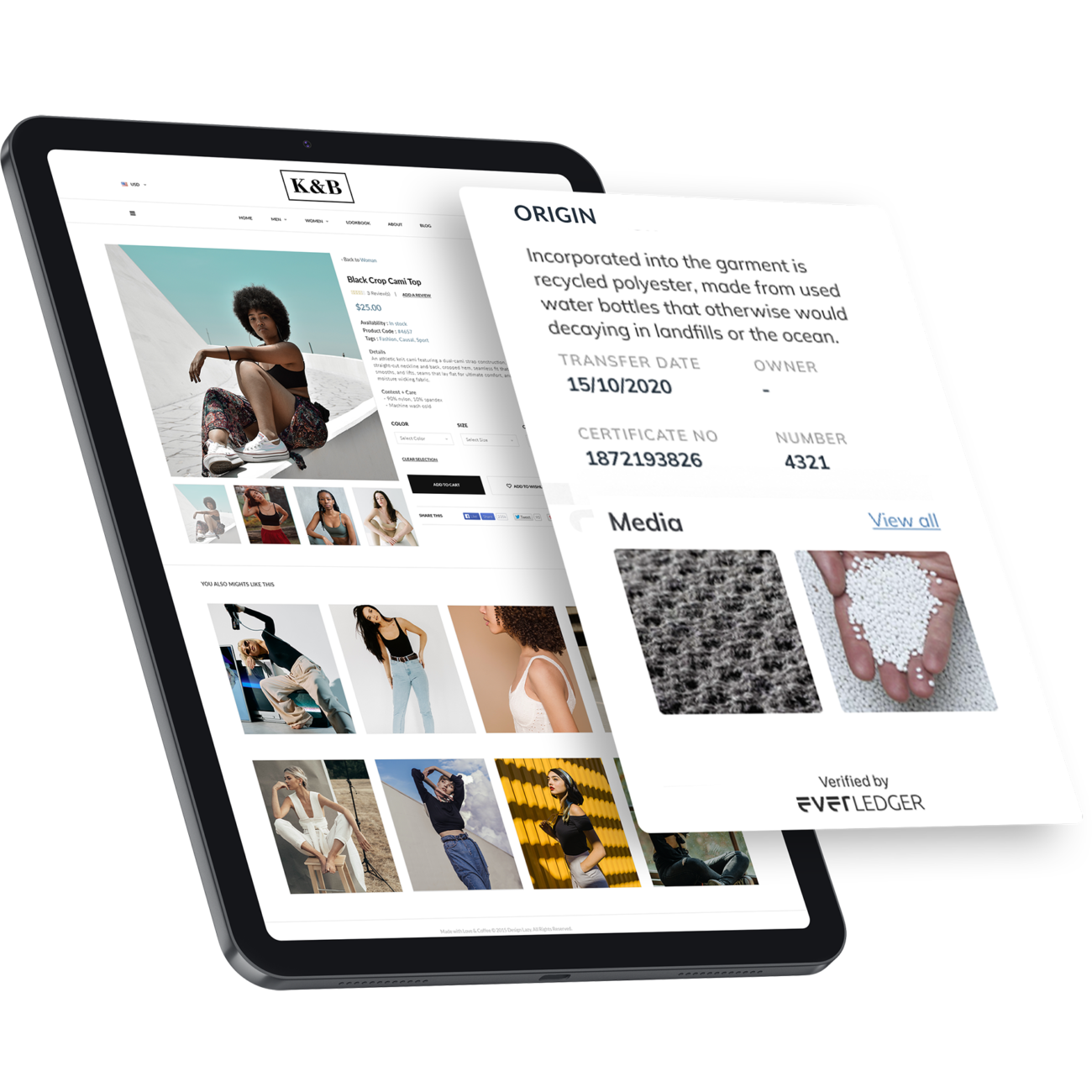
Product claims validated by blockchain
With a suite of powerful APIs, you can efficiently call on an object, material, or an entity’s provenance data from the Everledger Platform and render that information within your own site.
Organisations can customize their use of an asset’s provenance data, the frequency of requests made to the Everledger Platform, and the ways in which digital ownership is transferred to customers at the point of sale.
Everyone in the value chain benefits from the ability to discover and demonstrate value with blockchain-backed provenance records alongside physical and virtual inventory.

"In partnership with Everledger, we are defining next-generation standards in the jewellery industry and continuing our leadership in promoting transparency and responsibility."
BETH GERSTEIN
CO-FOUNDER & CEO — BRILLIANT EARTH
Use Amplify to enrich your narrative
Developers can use Everledger APIs to call provenance stories as a frame within existing product pages for retail customer purchases.
Object information, detailed provenance records, and even access to the Vault can be displayed in a variety of ways within an organization’s own domain and brand identity.
Features
Object API
With Everledger’s Object API, any retail site or online exchange can include basic blockchain-backed origin, certificate details, or compliance data alongside product descriptions.
The Object API allows anyone to verify the identity of an object by querying its digital twin on the Everledger Platform, calling either on end-points such as the Everledger ID or other attributes like an associated 3rd-party-issued certificate number.
Provenance API
Everledger’s Provenance API returns a complete provenance report of any object, including datestamped, media-rich transformation events along its path to market.
With the Provenance API, you can showcase a collection of blockchain-backed products or materials in line with your own brand identity by only querying the endpoints on the Everledger Platform needed to support your own media.
Transfer API
The Transfer API automates the reassigning of the record of ownership of a digital asset to a new owner over the blockchain when a sale is made. Conversely, the Transfer API can also be used to facilitate returns to a participant upstream of the current owner.
With the same suite of APIs, products that are sold on a retailer’s site can trigger a transfer of ownership from the retailer’s Vault to their customer’s Vault.
Vault
Within the Vault, organisations can maintain inventory reflective of digital asset characteristics, compliance standards, and sustainability efforts to search, find, and transfer ownership of objects as they are sold, returned and resold.
At the point of sale (POS), digital ownership is reflected in the customer’s Vault, where items such as forensic data, provenance events, and certifications of an asset are kept. Here, provenance details of an object can be viewed and shared on social media.
The ability to automate the transfer of this information may require integration with existing POS and accounting systems with collaborative technical consultation.
Support for Exchanges
Commercial buyers on conventional trading platforms can now gain visibility of a global supply on the blockchain that meets their purchase criteria.
Existing suppliers to an organisation can also upload asset data to the Everledger Platform to showcase their provenance documentation and differentiate their products and materials within those trading platforms.
Documentation
Access API documentation by either contacting the Everledger Customer Success Team or accessing the Everledger Developer Community


Use Case: Rare Carat
As more engagement ring buyers grow to expect a diamond story that provides evidence of origin, the Everledger Platform is providing jewellers with the ability to showcase diamonds with a provenance story that details each phase from the mine as it’s recorded on the blockchain.
With Everledger Amplify, exchanges such as Rare Carat can easily show that their diamond listings are in compliance with regulations and thus bolster claims of ethical sourcing with their customers.


